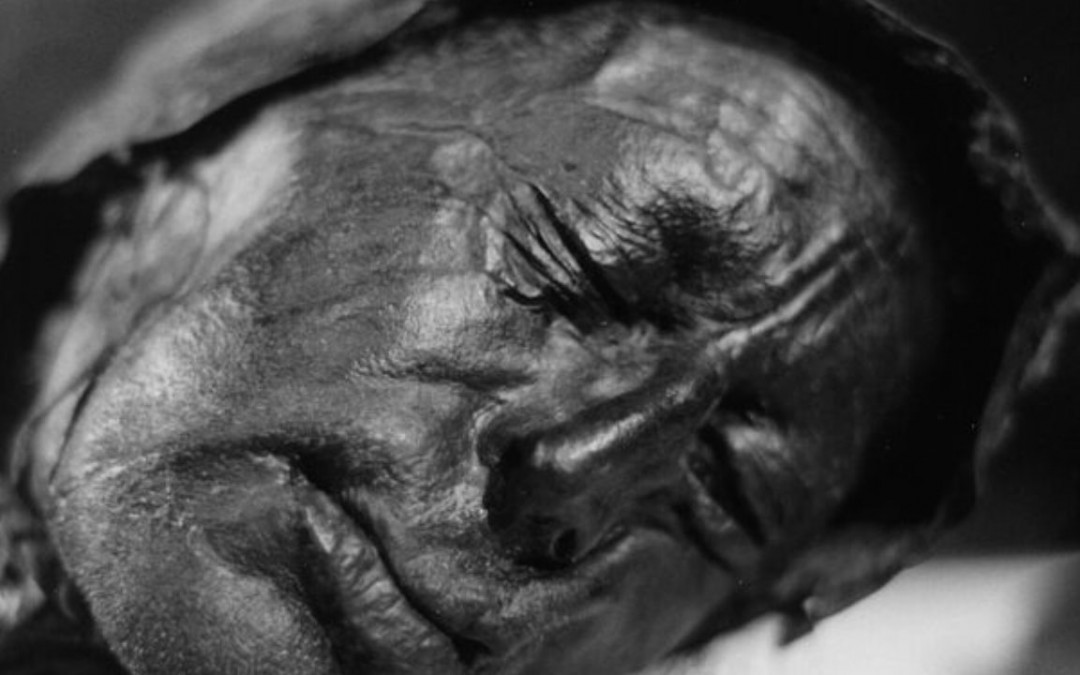What Are Bog Bodies?
Bog bodies are fascinating. They are the bodies of dead humans that have been preserved by a bog. Some of them died by falling in the bogs – and some of them were thrown into the bogs after they die as a burial tradition. The era they lived in varies greatly. We have recovered bog bodies from the Iron age, and bog bodies from the 18th century, and beyond. Each bog body had their own unique story. With modern science we are able to gather information on their lives by examining not just their bodies but their possessions and clothing they died with. This is a list of 10 Amazing Bog Bodies.

Girl of the Uchter Moor

One of the most famous and mysterious examples is the Girl of the Uchter Moor. Her bog body was discovered in the year 2000 in the German Uchte marshland. It was soon analysed and dated, concluding that the girl died between the years 764 and 515 BC – and she was in her late teens. She is thought to have been buried in the marshland by her community – making her different from most Iron Age people, their funerals tended to involve cremation. As she was discovered so recently, modern science has been able to learn a great deal about her. Even that she was left handed and suffered from malnutrition. We don’t know how she died but they have been able to reconstruct models of her face. The analysis came as a major shock as they thought the body was of a 16 year old who went missing in 1969.

Old Croghan Man
Old Croghan man is one of the most well preserved bog bodies ever found. It was recovered in 2003 from a bog near Croghan hill, in Ireland. He died between 362 and 175 BC and was in his early twenties. He was 6 foot 6 inches – which was unbelievebly tall for someone who lived 2000 years ago. The location of his burial was reserved for royalty. It is thought that he was a King – but his people betreyed and sacrificed him after he failed to lead them well. This would explain why he had been on a good diet for at least 4 months leading up to his death. It would also explain why he has what appears to be a stab wound in his chest. And why he was decpitated and why his body was literally cut in half. Some believe his people sacrificed him to the their gods in the hope of being blessed with a good harvest. During this period, failed rulers would often be sacrificed as they assumed the gods were punishing them for their leadership. He was completely naked apart from a leather ring around his arm.

Windeby I
Windeby I was named after the municipality Windeby as he was found in a bog near to it. It was recovered in 1952 and for a long time it was known as the Windeby girl. But modern DNA testing shows that it is actually the body of a male teenager. He is believed to have died between 41 BC and 118 AD. This is just one of two bog bodies discovered within the area in 1952. Windeby II died between 380 and 185 BC from being strangled with a hazel rod. It’s weird how two completely different people from completely different centuries are so closely associated with eachother just because they were preserved in the same bog.

Lindow Man
Also known as Pete Marsh, Lindow man was discovered on August the 1st 1984. He was in his mid 20s when he died in Lindow Moss, the current location of a famous peat bog. He died a bloody and violent death. He was strangled, beaten, and had his throat cut. We don’t know why he died this way but it’s estimated that it was between the years 2 BC and 119 AD. Back in those days, violance was all the norm. It is thought that he may have been someone of very high status as his body was in quite good condition. There were no signs that he engaged in much physical labor and his teeth were perfectly healthy. His death may have been an offering to the gods, otherwise they probably wouldn’t have killed him in such a bizarre way.

Grauballe Man
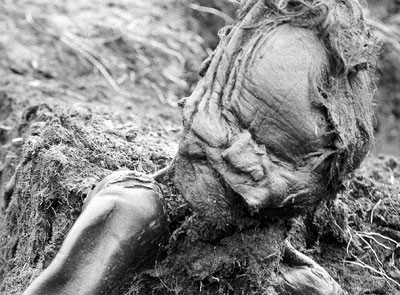
In 1952, a bog body was discovered in the Danish region of Jutland. It was that of a man – and given the name Grauballe man. Grauballe man died in the 3rd century BC, and probably died from his throat being cut. Although he’s been found to have other wounds. His throat was cut from ear to ear, and was possibly struck in the head. He was aged around 30 when he was killed. His body is now considered one of the greatest visual relics from Danish history. Still creepy though.

Haraldskær Woman
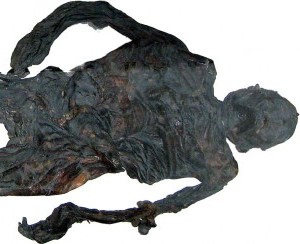
Haraldskær woman is another of Denmarks many bog bodies. She was discovered in 1835 – which made it a very big deal at the time. Upon early examination, she was believed to be Gunnhild (a character from various Norse sagas). Gunnhild was the Queen of Norway, although many historians believe she never actually existed. Despite this, they thought Haraldskær woman was her body for a long time. We now know that she wasn’t. But we do know she was about 40 years old at death and we assume she was the victim of religious sacrifice. This is due to her not being cremated like normal people would have been at the time. There is a slight mark around her neck that may have been from a rope – but like all bog bodies the full details of her past are unknown.

Bocksten Man
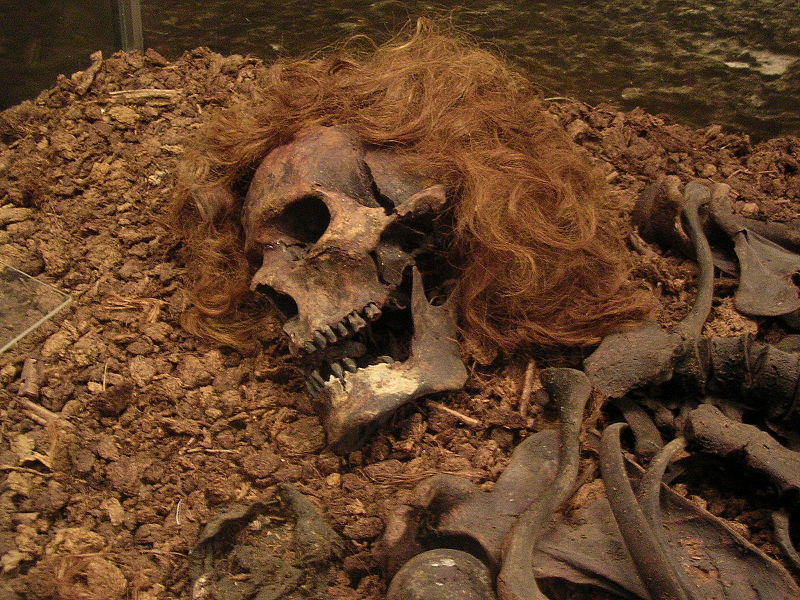
In 1880, a Swedish bog was being drained when they made an incredible discovery. A medieval leather shoe. In 1936, the body of the shoe’s owner was discovered in the same bog. They swiftly ruled out the man being an escaped crimminal – and is considered to have been 25 to 40 years old. The man was murdered by 3 strikes to his head and then thrown into a nearby lake. Over time, the lake became a bog, and his story lives on. Ever since the 1940’s, local Swedes have been desperate to learn the identity of Bocketen Man because of a dark legend. According to legend, an officer was once recruiting soldiers when he was murdered by peasants who didn’t want to fight in a war; his body was thrown into a bog. And his ghost has hauted the surrounding villiages ever since.

Egtved Girl
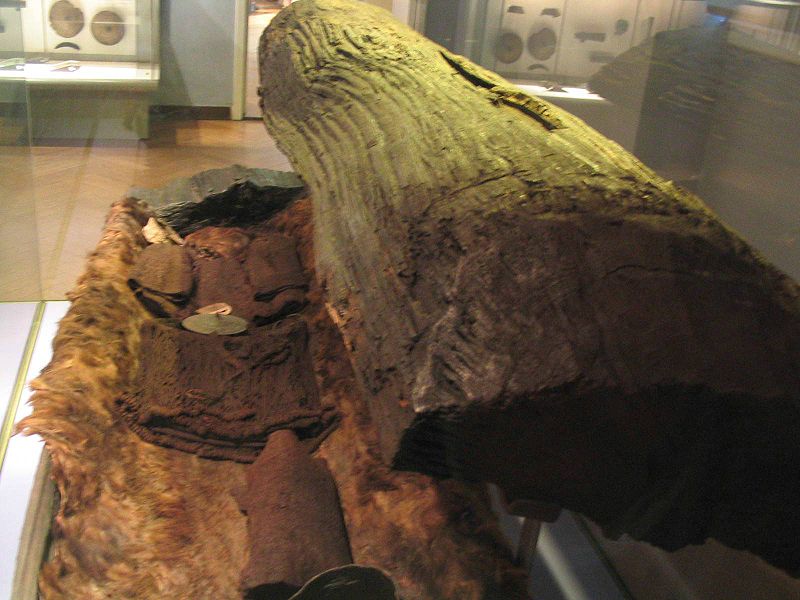
Egtved girl was a bronze age girl who was preserved in a bog along with her entire coffin, which she was inside. Preserved near the villiage of Egtved, in Denmark, she was in her mid to late teens when she died. It is highly unusual to find bog bodies well preserved inside their own coffins, drawing huge attention to her. Inside her coffin, she had the cremated remains of a young child. Which certainly is bizarre.

Osterby Man
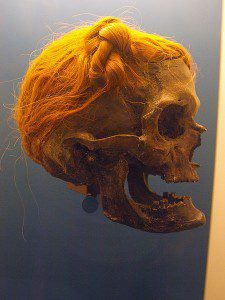
At present, only the hair and skull of Osterby man remain. The head was recovered in 1948 by 2 peat cutters – but no other part of his body was ever found. The head was covered in fragments of deerskin clothing, and it’s hair can still be seen on it. And it’s a pretty glorious hairstyle – looking all Roman. The hairstyle is called a Suebian knot and most likely means he lived during the late pre-roman age or maybe even the Roman age.

Tollund Man

The Tollund man is possibly the most well known bog body. When his body was discovered, it was believed to be a currently missing murder victim – that’s how well it was preserved. It was discovered in 1950 and is assumed to have died between 375 and 210 BC. At about the age of 40 he was hanged by the neck until death. His last meal was Iron Age porridge. If I’d just eaten a bowl of cold Iron Age porridge, I’d want someone to kill me as well.
Image attributions
Number 4 image – copyright Peter Lindberg licenced under creative commons
number 2 image – copyright Bullenwächter licenced under creative commons

